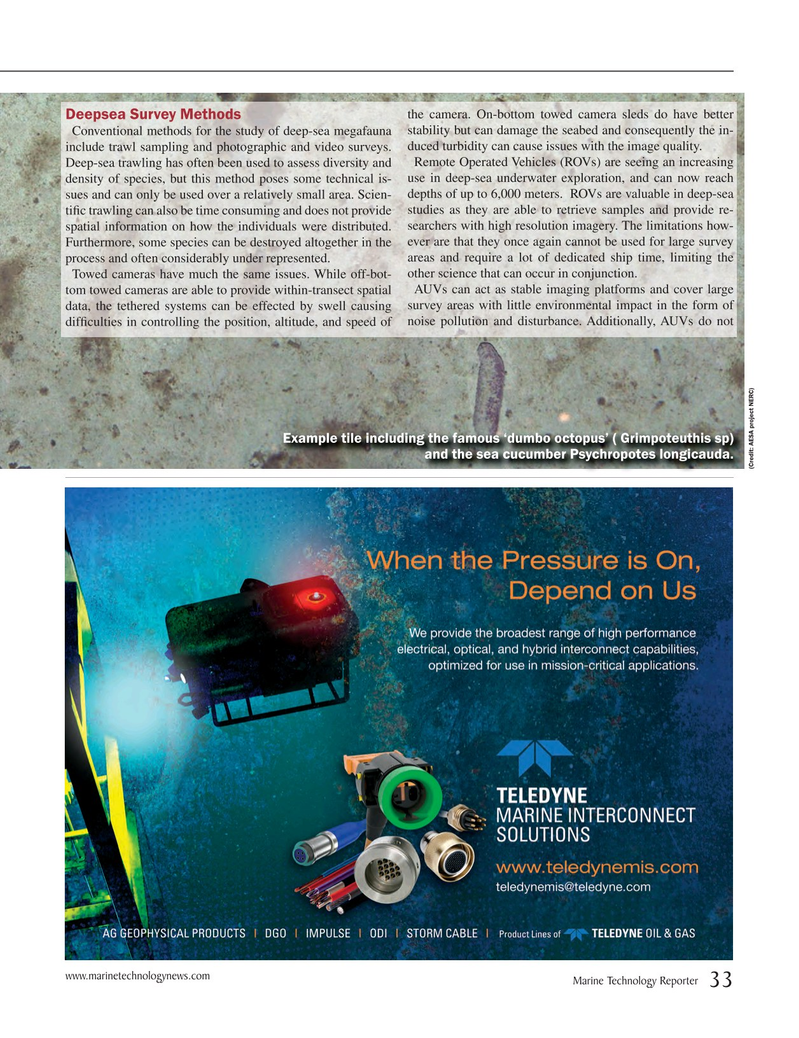
Page 33: of Marine Technology Magazine (March 2015)
Oceanographic Instrumentation: Measurement, Process & Analysis
Read this page in Pdf, Flash or Html5 edition of March 2015 Marine Technology Magazine
the camera. On-bottom towed camera sleds do have better
Deepsea Survey Methods
Conventional methods for the study of deep-sea megafauna stability but can damage the seabed and consequently the in- include trawl sampling and photographic and video surveys. duced turbidity can cause issues with the image quality.
Deep-sea trawling has often been used to assess diversity and Remote Operated Vehicles (ROVs) are seeing an increasing density of species, but this method poses some technical is- use in deep-sea underwater exploration, and can now reach sues and can only be used over a relatively small area. Scien- depths of up to 6,000 meters. ROVs are valuable in deep-sea ti? c trawling can also be time consuming and does not provide studies as they are able to retrieve samples and provide re- spatial information on how the individuals were distributed. searchers with high resolution imagery. The limitations how-
Furthermore, some species can be destroyed altogether in the ever are that they once again cannot be used for large survey process and often considerably under represented. areas and require a lot of dedicated ship time, limiting the
Towed cameras have much the same issues. While off-bot- other science that can occur in conjunction. tom towed cameras are able to provide within-transect spatial AUVs can act as stable imaging platforms and cover large data, the tethered systems can be effected by swell causing survey areas with little environmental impact in the form of dif? culties in controlling the position, altitude, and speed of noise pollution and disturbance. Additionally, AUVs do not
Example tile including the famous ‘dumbo octopus’ ( Grimpoteuthis sp) and the sea cucumber Psychropotes longicauda.
(Credit: AESA project NERC) www.marinetechnologynews.com
Marine Technology Reporter 33
MTR #2 (18-33).indd 33 MTR #2 (18-33).indd 33 3/8/2015 2:29:37 PM3/8/2015 2:29:37 PM

 32
32

 34
34
